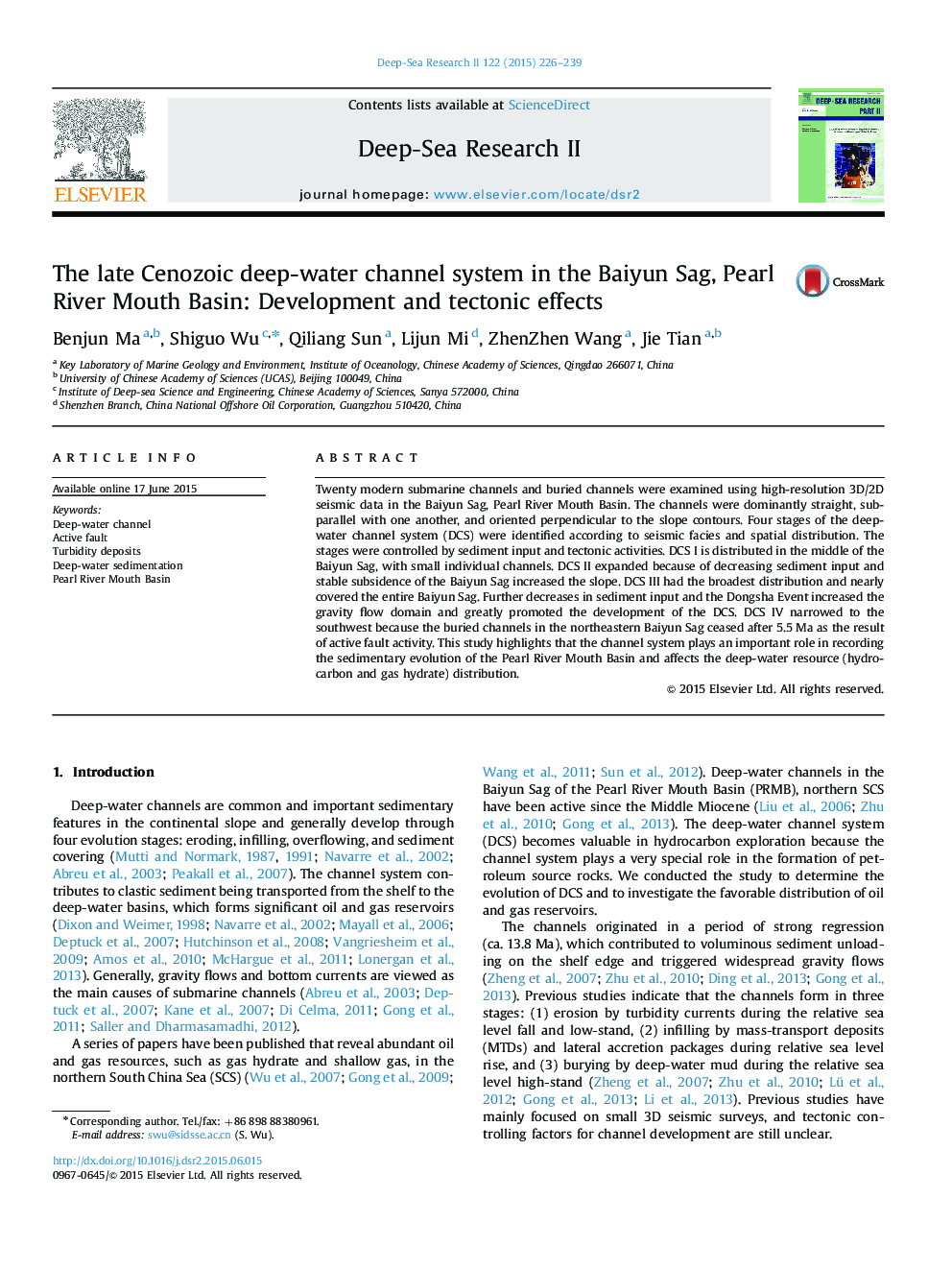| Article ID | Journal | Published Year | Pages | File Type |
|---|---|---|---|---|
| 4536173 | Deep Sea Research Part II: Topical Studies in Oceanography | 2015 | 14 Pages |
Twenty modern submarine channels and buried channels were examined using high-resolution 3D/2D seismic data in the Baiyun Sag, Pearl River Mouth Basin. The channels were dominantly straight, sub-parallel with one another, and oriented perpendicular to the slope contours. Four stages of the deep-water channel system (DCS) were identified according to seismic facies and spatial distribution. The stages were controlled by sediment input and tectonic activities. DCS I is distributed in the middle of the Baiyun Sag, with small individual channels. DCS II expanded because of decreasing sediment input and stable subsidence of the Baiyun Sag increased the slope. DCS III had the broadest distribution and nearly covered the entire Baiyun Sag. Further decreases in sediment input and the Dongsha Event increased the gravity flow domain and greatly promoted the development of the DCS. DCS IV narrowed to the southwest because the buried channels in the northeastern Baiyun Sag ceased after 5.5 Ma as the result of active fault activity. This study highlights that the channel system plays an important role in recording the sedimentary evolution of the Pearl River Mouth Basin and affects the deep-water resource (hydrocarbon and gas hydrate) distribution.
